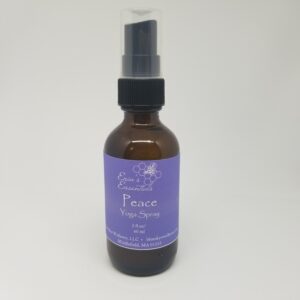Aromatherapy Isn’t Just Nice Smells!
 One of the things that I love about being an Aromatherapist is the opportunity that it provides to teach people about how essential oils work. Essential oils are made up of complex naturally derived chemical components that we can use therapeutically to support health. When we smell them they are processed through the olfactory system and have a direct and immediate effect on brain function. Also, when we smell essential oils they don’t just stay in our nasal cavity, but they are inhaled into the lungs where they are diffused from the lungs into the blood stream. Once in the blood stream they circulate through the body where they can have a short term effect on the different body systems. We cannot separate the two processes, olfaction and respiration are connected.
One of the things that I love about being an Aromatherapist is the opportunity that it provides to teach people about how essential oils work. Essential oils are made up of complex naturally derived chemical components that we can use therapeutically to support health. When we smell them they are processed through the olfactory system and have a direct and immediate effect on brain function. Also, when we smell essential oils they don’t just stay in our nasal cavity, but they are inhaled into the lungs where they are diffused from the lungs into the blood stream. Once in the blood stream they circulate through the body where they can have a short term effect on the different body systems. We cannot separate the two processes, olfaction and respiration are connected.
This dual pathway effect on the body’s systems is why it is important to understand an individual essential oil’s effect on physical, mental and spiritual states. The actions of a particular oil are important to note when creating blends in order to prevent combining essential oils that might work against each other but also to know how they might influence mood or physical conditions. The nice smells aren’t just pleasing aromas. They are powerful, naturally derived components that can have a direct influence on the functions of the body and our emotions. Optimally that effect will be beneficial but sometimes it can be counterproductive.
Recently I was asked to create a custom blended passive reed diffuser. At first, I embraced the idea of working on creating this blend but then I realized that creating a product that used a large quantity of essential oils and is designed for constant diffusion goes against what I teach about using essential oils. A common refrain in essential oil circles is “what are you diffusing today?” People love nice clean smells and there is a huge industry geared around that desire. The more essential oils that we consume, the happier that industry becomes. When I use essential oils via inhalation I will use an aroma stick, an ultrasonic diffuser, a passive diffuser, steam or spray. A few sniffs of an aroma stick, 30 to 60 minutes running an ultrasonic diffuser, a drop or two on scented jewelry, a 5 minute respiratory steam or a few spritzes of a room spray are some effective ways to use essential oils for aromatherapy. Less is more in these instances. There are a few reasons for why I don’t recommend constant diffusion.
Remember that when we can smell an essential oil that they are having an effect on us. The aroma cannot be separated from the effect on the body. Essential oils work differently in the olfactory system than synthetic fragrance but with constant input into that system it can be overworked. Nose blind or fading is when a scent is discerned but within a short time the strength of that scent becomes less and less until it may not be detectable even though it is present. Habituation is the effect of diminishing the noticeability of a particular odor over time. If an aroma is present at a concentrated level for even a short period of time and especially at longer durations it can cause headaches, nausea or allergic reaction. Olfactory overwhelm and the negative results of constant use of a therapeutic agent are reasons to reconsider constant diffusion and to use essential oils judiciously.
In my immediate family there are folks who are sensitive to different aromas and do not tolerate the concentrated smells from an ultrasonic diffuser or having a constant passive diffuser, like a reed diffuser, in the room that they are in. Not everyone is in need of or wants the same result or effect of an essential oil. We also have pets and while essential oils can be used with care around them constant diffusion may not be beneficial. Cats in particular are deficient in certain enzymes that contribute to metabolizing essential oils so they need to be considered when essential oils are diffused. I can smell a special blend in a portable aroma stick, in an oil on my wrist, in a wool pad or in a spritz on of the edge my pillowcase without effecting my bed partner, the dog, or the cat. I can also change the blend as needed. Maybe during the day I require something for energy, motivation and focus but in the evening I may be looking for a calming, soothing and even sedating effect to promote restful sleep. It is hard to turn off one scent and turn on another.
Essential oils are a precious extremely concentrated derivative of natural plant allies. It is important to learn how to use them with care and understanding in order to continue to benefit from their effectiveness and to protect their sustainability. In case you are wondering, after some discussion and teaching on my part, my client chose a wonderful custom room brightening/ mood lifting spray that could be used as needed when that particular effect was desired. Aromatherapy encompasses the therapeutic use of aromatic essential oils and it isn’t just about nice smells.
